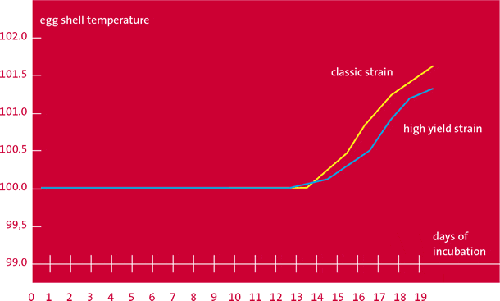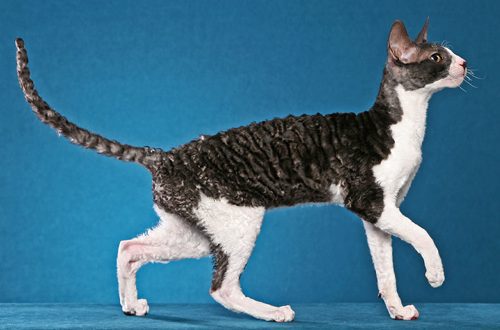
What is the optimum temperature in a home incubator and basic conditions
Birds such as chickens are widespread, they have always been raised by people, they used a mother hen to get chickens. For some reason, hatching eggs by a chicken has become irrelevant, certain breeds have lost their maternal instinct over the years. Breeders began to use modern methods of incubation in poultry farming for this purpose, abandoning brood hens in order to obtain a large number of chickens.
Contents
- Growing young animals with chicken and in an incubator
- Preparation for incubation
- Checking eggs with an ovoscope for incubation
- Hatchery Disinfection Procedure
- How to store eggs for an incubator
- When and how to lay eggs
- What can affect the breeding of young animals
- Chick selection after incubation
- Artificial incubation of young animals
Growing young animals with chicken and in an incubator
In the villages, people still use the old method to get young chickens, usually they use a chicken for incubation, and sometimes a turkey. They are full control of the entire process, and when the young appear, they drive it until the chickens become independent. For cultivated breeds, it is very difficult to find a mother hen, since they have already lost the incubation instinct.
In order to get young in the traditional way, the mother hen does not lay for 2-3 months, she incubates the embryos, and then looks after the chickens. Already on the 3-4th day, the mother chicken takes her chickens out into the street, if temperature not less than +15оС and the weather is sunny and clear. Incubation of chicken eggs at home allows you to speed up the process and give much more young.
Modern methods make it possible to breed chicks from chicken eggs at home without resorting to the help of a mother hen using an incubator.
Preparation for incubation
- The incubation of chicken eggs at home depends on the quality of the eggs, as well as their weight, shape. It is best to select the largest eggs, and sensitive scales will be able to determine their weight with an accuracy of 1 gram.
- Large chicken eggs have everything for the good development and survival of the embryo, namely nutrients. The varieties of meat chickens have their own requirements, it is much more difficult to select their eggs, so they are very much appreciated among bird breeders.
- strong shell serves as a reliable protection for the embryo from external influences, the shell is of great importance, its integrity is associated with gas exchange and thermal processes. The shell should be without cracks, have a holistic structure.
- If there are small chips or cracks on chicken eggs, they will quickly become unusable, dangerous microorganisms will settle in them. The wrong shape will not be able to provide the embryo with a sufficient amount of air, its lack leads to death.
- To inspect the eggs, it is best to use a magnifying glass, with its help all the flaws will be clearly visible, it is imperative that the shell does not have scratches, cavities and irregularities. Also, bright lamps and an ovoscope are often used for a thorough examination.
Checking eggs with an ovoscope for incubation
- This device can check the quality of the eggs of any bird, so many breeders of domestic birds use it to detect defects before laying and during the incubation period. The device will be able to detect the slightest imperfections on the eggshell.
- When it comes to a rare, valuable breed, there is small cracks, then experts advise to eliminate them with glue and starch, a notch or crack is smeared with the prepared mixture. If rare and valuable breeds of poultry are bred in the incubator, minor defects do not play a big role, since such breeds are almost always with low egg production.
- Usually, if there are dark and light spots on the eggs, then there is no guarantee that the chicks can be viable or can develop much more slowly. The ovoscope helps to see the presence of air chambers, the freshness of the eggs depends on them. When viewed, the chambers look like dark spots located at the blunt end of the eggs. The chamber should be small, a large one will not allow chickens to be born.
- The state of the yolk is also determined, it should not move freely in the shell, and if this happens, then it is not suitable for the incubator.
Hatchery Disinfection Procedure
The process of incubating chicken eggs at home impossible without disinfectionto prevent pathogens from entering the incubator. In poultry farms, formaldehyde vapors are usually used during the incubation period, the finished solution is placed in the incubator chambers and the solution vapors at a temperature of +37оC, then everything inside is processed within 30 minutes.
At home, many take an ordinary box for an incubator with a tight-fitting lid and the usual wet cleaning disinfect the selected eggs. They are placed in a plastic mesh, after which they are immersed in solution B of chloramine or iodine. All grid content immersed in the prepared solution, it immediately disinfects the surface of the shell. The method is well suited for homeowners, as it is convenient, does not require special skills and knowledge. Any of the solutions must be used carefully, it should not harm human health.
How to store eggs for an incubator
Eggs that are selected for hatching must be kept at a certain temperature and humidity. Do not lower the temperature below +10оC, in case the eggs do not enter the chamber soon Very good hatchability of hatching chicks is observed when air temperature is +18оС, it is considered the most optimal for the withdrawal of young animals. Humidity should be at the level of 85% and no more.
If the eggs have lain for a long time, then they cannot be suitable for breeding chicks. When they are old, they decrease in mass and decrease in density, since the protein has lost water.
It is recommended to store them for a maximum of 6 days. A longer storage period will adversely affect the hatchability of hatching chicks. It is impossible to keep the selected embryos in the refrigerator, too low a temperature will adversely affect future development.
When and how to lay eggs
- Experts advise laying eggs in the evening, but many do it at any time of the day and get good results.
- If the eggs were stored at a low temperature, then before laying them they must be placed in a warm room, they must be warmed to room temperature and thus do not lose valuable moisture.
- For laying, the eggs must be of the same size, then the chickens will appear almost at the same time, it is known that larger ones require more time for the entire hatching process.
- The vertical position when laying should be mandatory, and if the tray is not full, then you need to fasten the eggs with a sheet of cardboard or a metal strip, they should be in place, even after turning over.
What can affect the breeding of young animals
Optimal microclimate in the incubator should always be for the normal hatching of chickens. Be sure to monitor the humidity so that the eggs do not lose moisture, the most optimal should be 75%. Modern incubators have special thermometers that allow you to monitor the level of humidity and temperature.
Embryos need fresh air, so you need to make sure that it enters the incubator through special holes, keep them open so that the embryos do not die.
Optimum dry bulb temperature should be at +37,5оС, and on wet, the indicator is +29оC, periodically observe the embryos. Already after 6 days there should be blood vessels in the eggs, and the embryo becomes visible on the 11th day.
Chick selection after incubation
As soon as the chicks begin to hatch (in about 20-40 minutes) they must be selected, a longer selection time may adversely affect the health of the chicks. Frisky and active young animals will develop well and quickly, they can be identified by their shiny fluff, strong legs, they are very mobile and react to any sounds.
Healthy chicks should have shiny, bulging and clear eyes, as well as a short beak, a soft belly with a selected umbilical cord, an elastic keel. If the temperature in the incubator is normal, then the chickens are mobile and cheerful, they confidently stand on their feet. When the temperature exceeds the norm, the chicks will be lethargic, without appetite.
Low temperature also negatively affects development, the chicks begin to squeak, become inactive.
If some chicks do not meet the listed criteria, then they are unlikely to make healthy hens and cockerels.
Artificial incubation of young animals
Thanks to modern methods of incubation, many breeders of domestic birds have ceased to use the traditional method. – incubation of eggs by chicken. The incubator provides an excellent opportunity to get numerous young chickens, but in order to get good offspring, you need to know some important points about the conditions for using the incubator, under which healthy and full-fledged chickens appear.
Hens and cockerels are excellent and unpretentious pets that bring benefits, so raising them can be an entertaining and profitable business.





